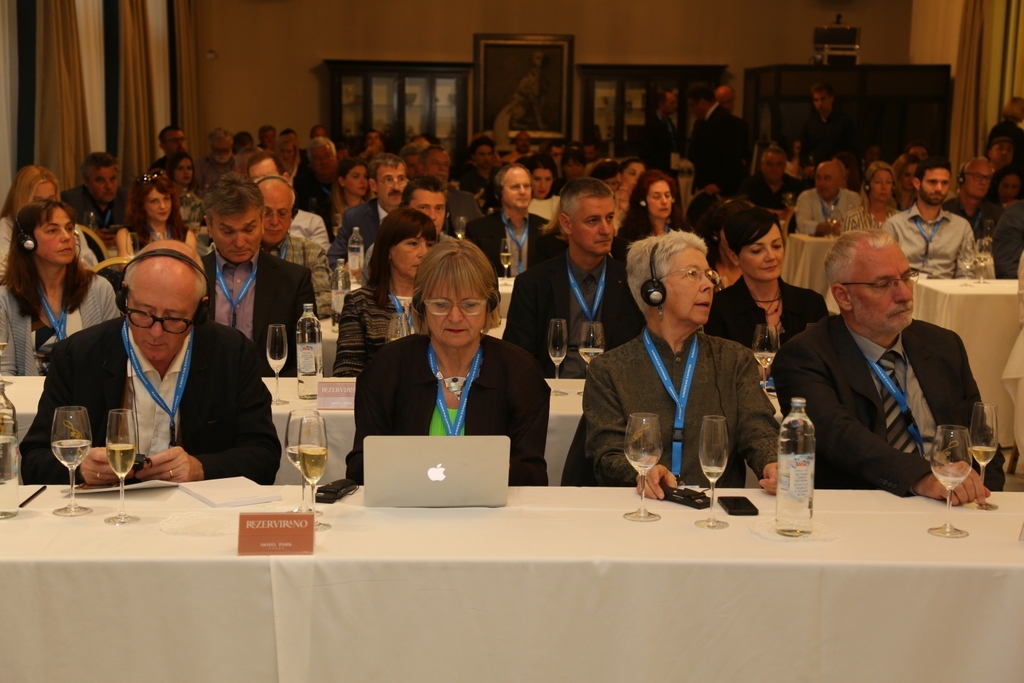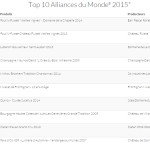International wine industry gathered in Split yesterday and today, to learn more about the indigenous Croatian wine variety that can now be found in all corners of the world – Tribidrag.
Yesterday the first international “I am Tribidrag” conference was opened in Split, bringing together over a hundred participants, wine experts, researchers and winemakers to discuss the success of probably the most widespread indigenous Croatian wine varieties. The aim of the conference is to expand on the knowledge of Tribidrag and wine in general, and to continue the co-operation with the winemakers on revitalising and promoting indigenous varieties in Croatia.
Conference was opened by the president of the Tribidrag Association, Davorka Krnić-Trick and Professor Edi Maletić from the University of Zagreb’s Faculty of Agriculture, who said that he was really happy that so many people came together to find out more about one specific variety.
At the dinner which was the conference’s opening we heard Douglas Jones, Deputy Chief of Mission in the USA Embassy in Croatia, who sad that this was one of his most favourite activities since he took the role. He stated that he is so glad that Zinfandel (the most common name used for Tribidrag in the US) found its way home, to Croatia where its journey to “conquer” Napa Valley started. This is a story of success, but also a story of a special bond between Croatia and the US.
One of the very special guests at the conference was Professor Carole Meredith from the University of California, Davis, as she led the American-Croatian team that has been researching the ties between indigenous Croatian varieties and American Zinfandel. She was awarded the Order of Danica Hrvatska with Ruđer Bošković face, given for scientific accomplishments, awarded by the President of the Republic of Croatia, Kolinda Grabar-Kitarović. In her speech Professor Meredith said that she’s worked with Professor Ivan Pejić for the past 20 years, and that the variety has brought them together in friendship. The story of Tribidrag is the story of friendship, curiosity and persistent research, which eventually lead to solving the puzzle of the origin of the popular Zinfandel.
Professor Ivan Pejić introduced Tribidrag as one of the first Dalmatian emigrants to the US, and reminded everyone that when they started their work, there were around 25 old Tribidrag vines in the Dalmatian vineyards to be found, while today there’s over 100 hectares of newly-planted vineyards of Tribidrag.
Jancis Robinson, one of the most famous wine critics and writers in the world included Tribidrag in her book “Wine Grapes”, a book that is often called the Wine Bible, and she explained how she decided to use the Croatian name Tribidrag as the official name for the variety in the book.
The special surprise for the participants of the conference was a welcome message by Miljenko (Mike) Grgić, one of the most famous Napa Valley winemakers, born in Croatia. Grgić is one of the first people who suggested the similarities between Plavac Mali and Zinfandel, which proved to be correct after many years of research. He wasn’t able to come to the conference, because of his age, but he recorded a video-message to the participants, and toasted with a glass of his Napa Valley Zinfandel from 2014, and that wine was also offered to those at the conference in Split.
https://www.youtube.com/watch?v= tKBKwFk2zWs
Today, on Friday, the guided tastings of wines made all around the world from Tribidrag were held. American Zinfandels were presented by the American winemakers David Gates and Joel Peterson, in Italy the variety is called Primitivo and Italian wines were presented by the Italian winemaker Lisa Gilbee. Goran Zdunić and Edi Maletić led the guided tasting of Tribidrag made in Croatia, and famed wine educator, writer and geneticist José Vouillamoz led the tasting of Tribidrag made in the rest of the world – from India to Chile.
Journalists participating in the conference also got the chance to visit Kaštela, where some of the old Tribidrag vines were found, and which is also how the variety got one of its many names: Crljenak Kaštelanski.











